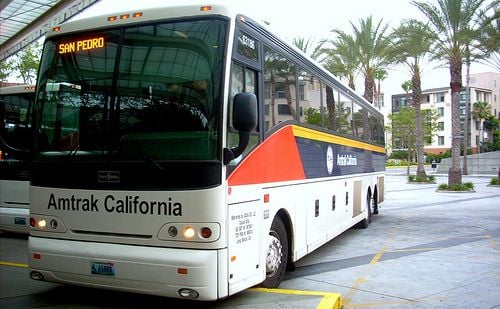This piece originally ran on Greater Greater Washington.
Matt Johnson argues that transit trip planning tools should show riders a wider range of options, illustrating how the schedules of connecting services (like bus and rail) mesh. That’s often true, but for for a transit system with high-frequency routes, the best way to improve the usability of transit may be to show fewer times, not more.
If a person is traveling between two points that are served by a high-frequency grid of routes, then what does it matter when they are leaving? When you provide a rider with a rigid itinerary—“here’s how to get there if you leave at exactly 5:17pm”—you give them the impression that if their departure time changes, then they have to re-plan their entire trip. With high-frequency routes, that simply isn’t the case.
If a rider can take the trip entirely using high-frequency routes, doesn’t it seem so much more liberating to tell the rider to “show up any time and arrive within 45 minutes”?
Simplifying directions like this helps riders internalize the route network and encourages spontaneity. Instead of having the sense that every transit trip starts with a visit to Google Transit, riders gain the sense that they can travel whenever they want.
Jarrett Walker emphasized the value of grids, and of high-frequency transit services, during his talk in Washington, D.C. last week. “Frequency is freedom,” he says. A regular grid of frequent services makes it easier to get around without having to consult an online trip planner before every trip, though many riders still rely on Google Transit and local trip planners to figure out how to get around.
In fact, the worst thing a trip planner can do is recommend that a rider take an infrequent, irregular service just because it happens to be there when the rider is starting their trip. A great example of this is the Route 305 bus in Los Angeles; as Walker explains, it’s a low-frequency service which runs through a high-frequency grid:
That means that the 305 is the fastest path between two points on the line only if it happens to be coming soon. If you just miss one, there’s another way to get there faster, via the much more frequent lines that flow north-south and east-west across this entire area.
Why should a trip planner ever recommend that a rider take a bus like the Route 305? Doesn’t it make more sense to show them to how to use the high-frequency grid to their advantage?
Our hapless, misdirected rider will doggedly wait for that infrequent route to come along, because it’s what their itinerary lists. But if they’d received an itinerary which used the high-frequency grid, they’d be on their way a lot sooner.
Of course, even in cities with the most comprehensive high-frequency grids, some trips require going outside the grid. Then, there may be no choice but to ask the prospective rider when they’re traveling. But even in those cases, the trip planner’s itinerary should still include information on the frequency of the services being used.
Simply put, out in the real world, things happen. A rider might get to the bus stop or train station 10 minutes or even 30 minutes after they’d intended, so doesn’t it make sense to tell them up front how long they’ll have to wait if they miss the planned trip?



_920_518_600_350_80_s_c1.jpg)












